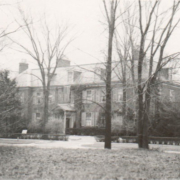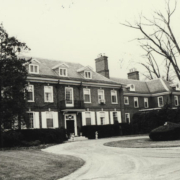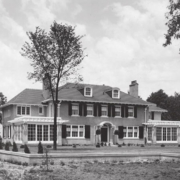Historical Architecture of Grosse Pointe – 241 Lake Shore, the Final Years
Last week we presented the story of the lost garden at 241 Lake Shore, the former grand estate of Mrs. Henry Stephens (wife of lumber baron Henry Stephens Jr. who passed in 1910). The magnificent property was designed by Charles A. Platt in 1913. It was demolished in 1988. This week we stay with 241 Lake Shore as we delve into the final part of the story – beginning in the late 1940’s, when it became known as the “Kanzler Mansion”, through to the properties dramatic conclusion in 1987.
After the original owner Mrs. Stephens passed on May 12, 1944, it appears 241 Lake Shore was purchased by Ernest C. Kanzler, a prominent figure in Detroit who had “full responsibility for converting the auto industry for World War II.” Source: Detroit Free Press (December 1948). A native of Saginaw, Mr. Kanzler (born 29 May 1892) attended the University of Michigan and Harvard Law School before launching his career in Detroit. During his career he was chairman of the board of Universal CIT Credit Corp, vice president at Ford Motor Co., a consultant to the auto division of the National Security Resources Board, a lawyer, and a long-time civic leader in Detroit. In 1917 Ernest married Josephine Hudson Clay. It is apparent Mr. and Mrs. Kanzler had a fondness for the arts. Josephine was widely known in Detroit for her patronage of the arts and made frequent gifts to the Detroit Institute of Arts. Image courtesy of: Detroit Free Press (December 1948).

Prior to moving to 241 Lake Shore, the couple resided at two splendid residences – a grand home in Indian Village 2501 Iroquois. Completed in 1919, the house was designed by prominent local architect Leonard B. Willeke, while the garden was designed by internationally acclaimed designer Jens Jensen. Then, around the mid 1930’s, the couple moved to 235 Touraine, in Grosse Pointe Farms.
During the late 1940’s the Kanzler’s were on the move again, purchasing 241 Lake Shore. As aficionados of the fine arts the property would have been perfect for the couple with its array of fine architectural details and sumptuous finishes. The living room was immense, measuring 21’ x 45’ sq ft. The library measured 21’ x 24’ sq ft, while the dining room was 21’ x 30’ sq ft – all three rooms had large fireplaces. There were two kitchens (15’ x 21’ and 14’ x 24’ sq ft) and a dining room for the staff. The first floor also featured a terrace, a large pantry, a study, and an elevator. When Mr. Kazler purchased the mansion there was a glazed loggia overlooking the garden, but later he would enclose this space and fill it with antique French paneling. Source: The Buildings of Detroit by William Hawkins Ferry.
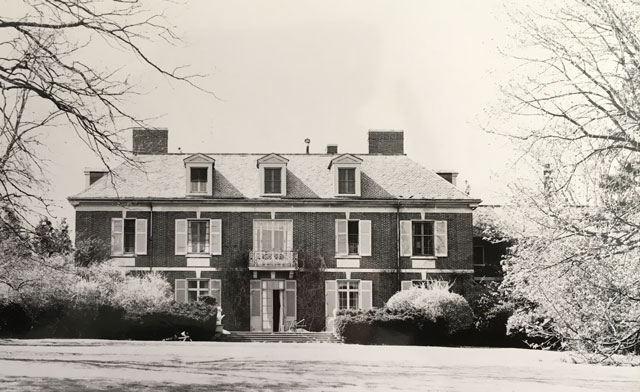

The second floor included five large bedrooms (three had fireplaces), a sitting room, and five bathrooms. There were five additional smaller bedrooms for servants. The third floor contained a guest suite with a bedroom, bathroom, a sitting room plus two further bedrooms for maids. Given the stunning gardens (designed by William Pitkin Jr.) the property was a regular stop on the annual Detroit Garden Center Garden Pilgrimage tour that was held annually across Metro Detroit in May/June.

Ernest Kanzler passed on 10 December 1967. It appears 241 Lake Shore was then listed for sale in October 1968, for $350,000 (around $3.1m today), by Kanzler’s second wife Rosemarie (whom he married in July 1955, following the death of Josephine, April 1954). Based on our files, we can confirm the property was sold in April 1970, to Howard M. Love. He then listed the residence for sale in February 1976. At the time our files state “the property can be divided into a maximum of four lots, per deed restrictions.” The entire property was sold intact in 1978 to William Anton, who would reside there for several years. That same year 241 Lake Shore became the location for the Junior League of Detroit’s second Designers’ Show House. It was the first show house to have a ‘garage pavilion of plants’ selling plants, ferns & palms, trees, pottery, statues, and terrarium lamps – a fitting tribute to the gardens that were once so integral to the property.
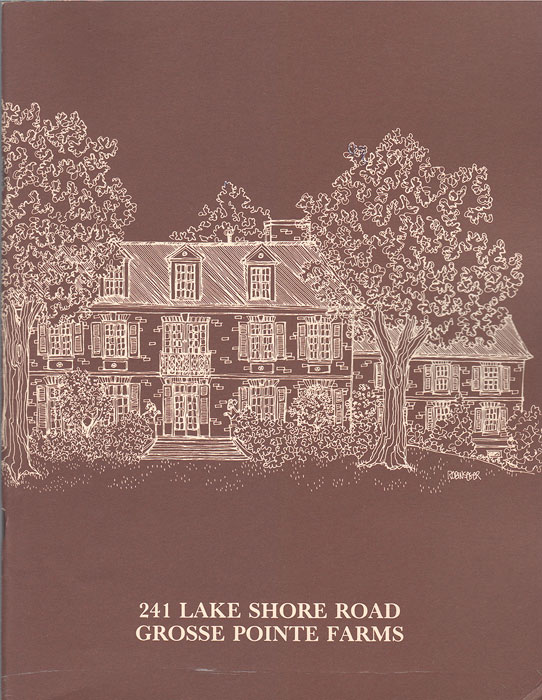
In 1981, Mr. Anton sold the building at the back of the residence (the gardener’s cottage, believed to have been built in 1920). He then listed what remained of the estate for $525,000 (around $1.8m today). It was taken off the market in 1983, however it was listed again in April 1986, at which point 241 Lake Shore was sold for the final time.
By 1988, the new owners of the 75-year-old mansion had scheduled it for demolition. Prior to the property being razed a huge auction was held the previous year on May 9, 1987. Around 130 items from inside and outside the house were listed in the auction catalogue which included stonework, wrought iron garden gates, bronze door knockers, and the carved stone frame and figurines from around the front entrance. Items from the interior sold in the auction included fireplaces, the staircase, a lady’s powder room, wall paneling, mantels, countertops, the elevator, and wall sconces – anything that could be “pried off and carted away.” Aside from the exterior stonework the auction catalog also listed roof tiles, downspouts, drainpipes, and gutters, however questions remain as to whether any one bid on these exterior items. Source: Grosse Pointe News (May 14, 1987).
It was reported the auction began with the stone front entrance with its carved cornices, cherub masks, and the wrought Iron railing. Two hours later, it was all over. The auction drew about 200 people – not just local residents, but also bidders from over 1500 miles away. An article in the Detroit Free Press (April 19, 1987) reported “bidders on large items such as fireplaces likely will bring their contractors with them and cut the pieces out of the house immediately after the auction.”
Prior to the auction it was reported the then owner wanted to keep the shell of the structure intact but undertake a major renovation at the property. At the time it was reported numerous members of the Grosse Pointe Historical Society were joined by William Hawkins Ferry, author of The Buildings of Detroit, to protest the auction – the group knew the auction would ultimately lead to the destruction of the 25-room French Baroque style mansion. It appears the members of the Historical Society wrote a letter to the owners – a plea to preserve the structure, while William Hawkins Ferry also wrote a letter, both were hand delivered, but to no avail. Source Grosse Pointe News (May 14,1987).

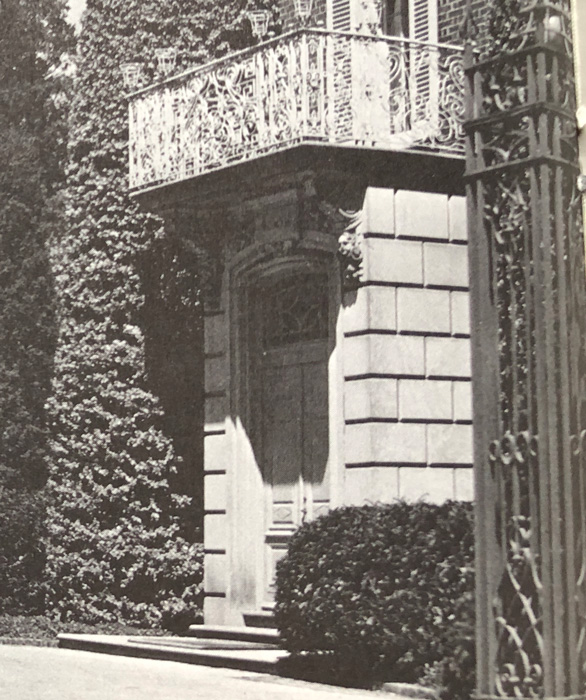

241 Lake Shore was razed in 1988 and the land sub divided. While it is a mystery as to what happened to many of the items that were sold at the auction, we believe we have located the carved cornices and cherub from the entrance – now situated on the front entrance of 2 Dodge Place. Images courtesy of HMA; Buildings of Detroit by William Hawkins Ferry, and the Grosse Pointe News (14 May 1987).
Meanwhile all that is left of the original property is 240 Grosse Pointe Blvd (the former servant’s quarters for the Stephens estate), there is a small part of the original gardens (to the right of Forsyth Lane), and of course there is a lasting reminder of the name in ‘Stephens Road’. Images courtesy of Google Earth.
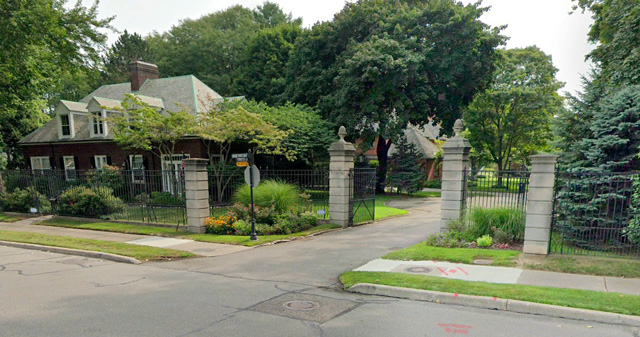
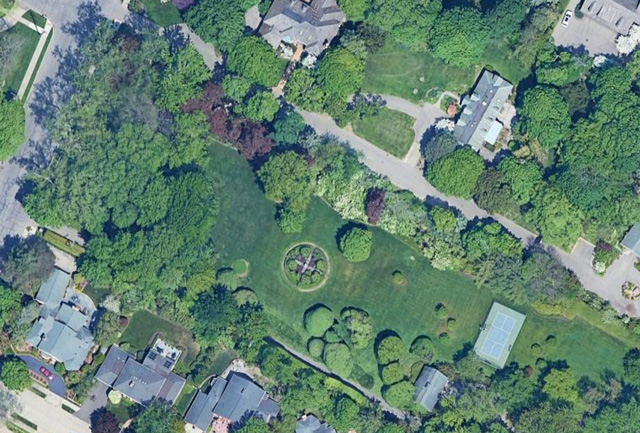
*Photos courtesy of the Higbie Maxon Agney archives unless stated.
** Research, information, and data sources are deemed reliable, but accuracy cannot be fully guaranteed.
Written by Katie Doelle
Copyright © 2024 Katie Doelle







